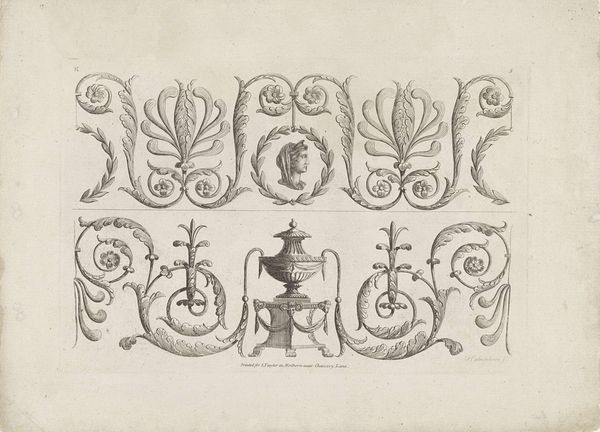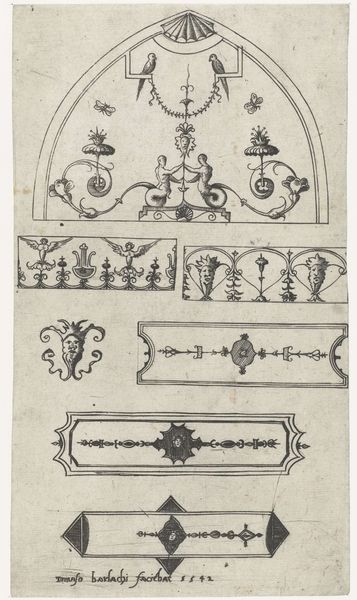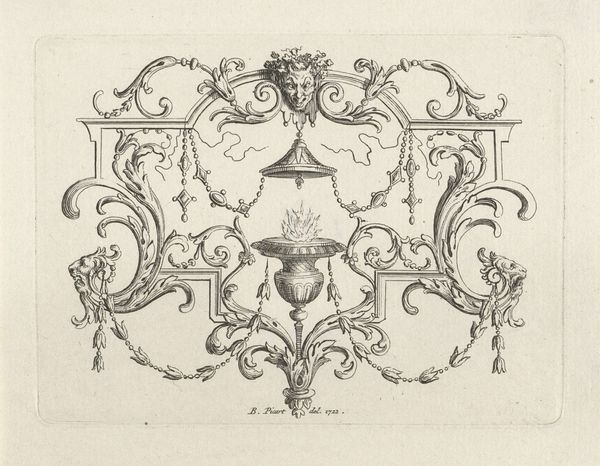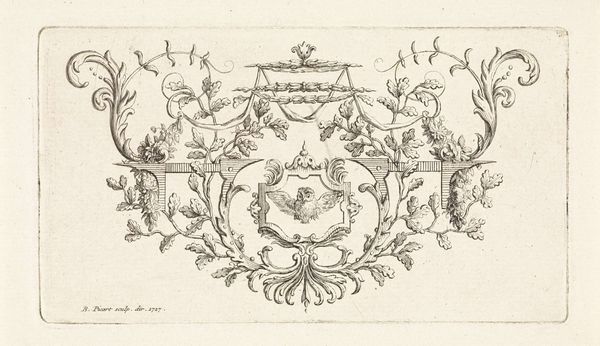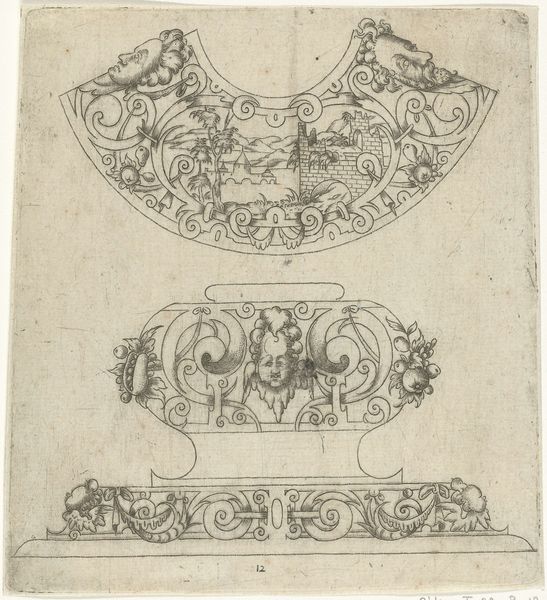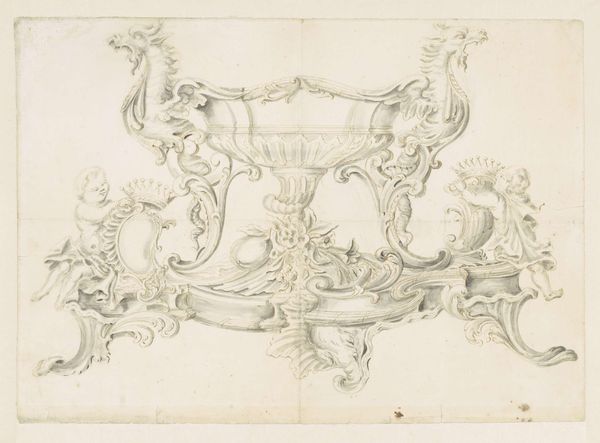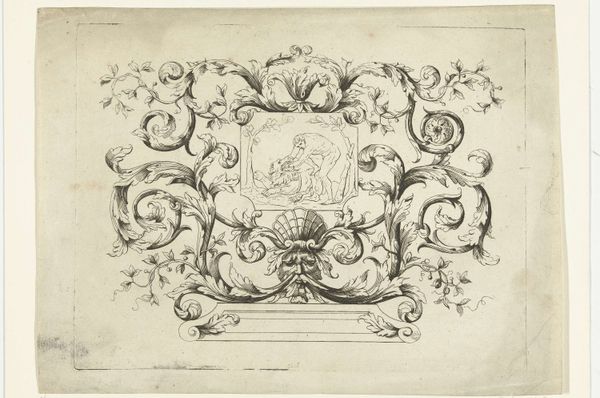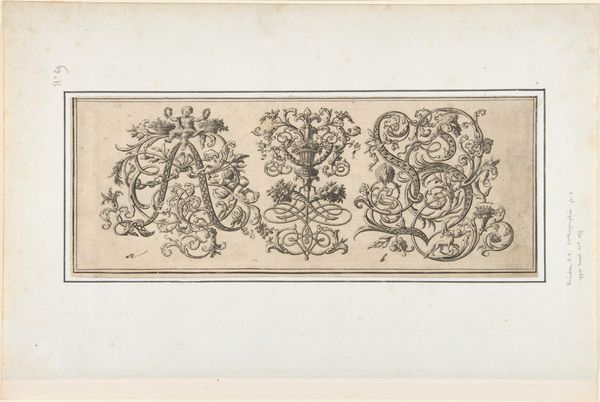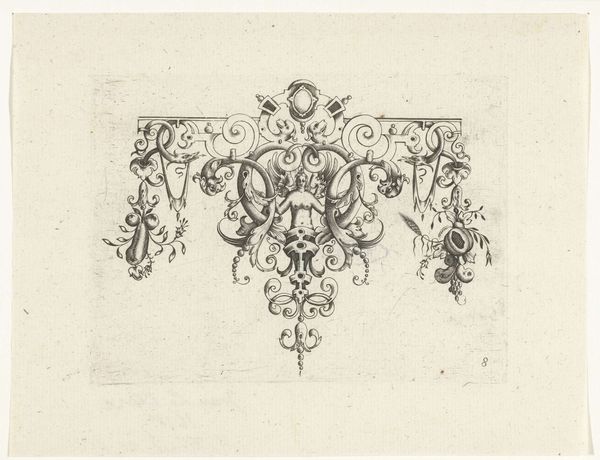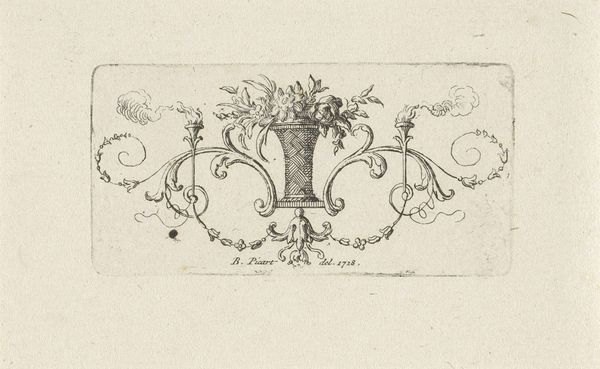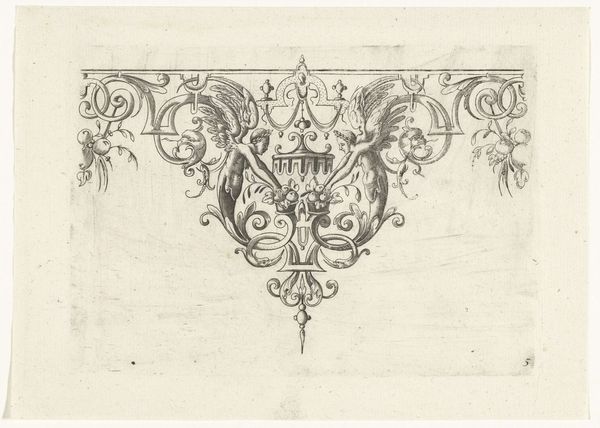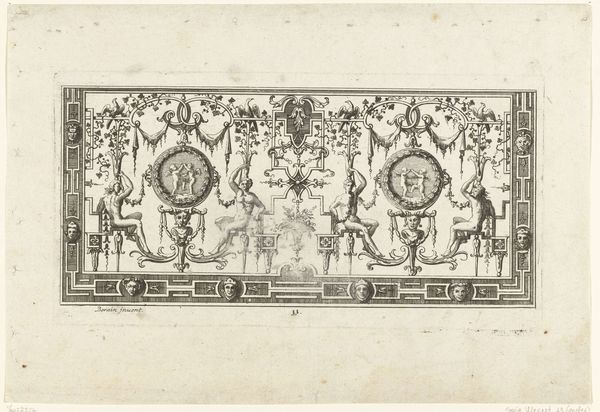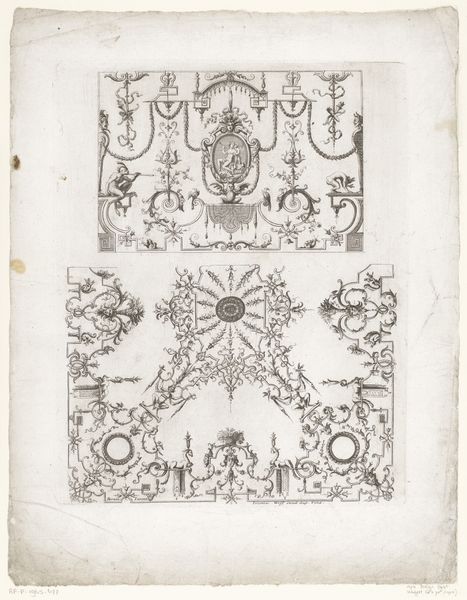
Classical Design Element with Leaves and Vines 1776 - 1779
0:00
0:00
drawing, print, pencil
#
drawing
#
neoclacissism
# print
#
geometric
#
pencil
#
academic-art
Dimensions: sheet: 8 13/16 x 9 5/16 in. (22.4 x 23.7 cm)
Copyright: Public Domain
Editor: Here we have Thomas Hardwick’s "Classical Design Element with Leaves and Vines," dating from 1776 to 1779. It's a pencil and print work. What strikes me is the almost mathematical precision of the foliage; it's nature rendered into something very architectural. What do you make of this piece? Curator: The work exemplifies Neoclassical aesthetics, visible in the symmetry and idealised forms. Notice how the artist utilizes hatching and cross-hatching to create tonal variations, mimicking the three-dimensionality of the intended architectural element. The careful balance between organic motifs and geometric underpinnings reveals a structural sophistication. Editor: So you're saying it's about this dialogue between natural forms and geometry? Curator: Precisely. Consider how the vegetal forms—leaves and vines—are stylised and contained within geometric frameworks. Observe the rhythmic repetition of shapes and lines, creating a sense of order and harmony. What effect does the artist achieve through this controlled rendering of natural elements? Editor: Well, it feels very controlled, maybe even a bit austere. The intricacy is impressive, but it's a cool beauty, not a wild one. Curator: Exactly. It’s this very restraint that defines Neoclassical art. The work adheres to formal principles of clarity, order, and balance, suppressing excessive ornamentation in favor of a more refined aesthetic. And, you know, to better understand how an architect could utilize Classical Elements in construction designs for the future. Editor: That's a great point, especially regarding its original architectural context. It's fascinating how even seemingly 'natural' elements were so meticulously planned. Thanks! Curator: My pleasure! Considering form, materiality, and design—rather than focusing on symbolic meanings—allows for a fresh view on architectural principles from bygone eras.
Comments
No comments
Be the first to comment and join the conversation on the ultimate creative platform.
